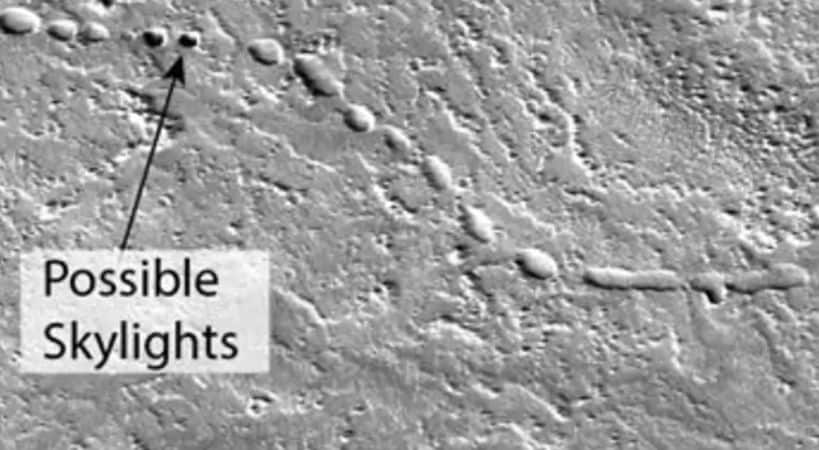Lava tubes under the surface of the Moon and Mars are large enough to host planetary bases as humanity explores space. These huge caverns are shielded from solar radiation, making them uniquely suitable for human life, scientists believe.
The lava tubes or volcanic pipes are underground caves, tunnels usually shaped, formed by a stream of molten rock once ran between the walls. It is a very common type of cave in places with volcanic activity and it is very likely that they also exist on other planets and celestial bodies. To this day, its existence has been documented in the bodies closest to Earth: the Moon, Mars and Venus.
“The largest lava tubes on Earth are a maximum [approximately] 40 meters [130 feet] wide and high. So like a very large highway tunnel,” explains Riccardo Pozzobon, a geologist at the University of Padova in Italy and co-author of the study.
But on Mars, lava tubes tend to be about 80 times larger than those on Earth. Lunar lava tubes appear to be even larger, the researchers found, with collapse sites 300 to 700 times the size of those on our planet.
In this way, Pozzobon told Live Science, a lava tube on the moon could easily contain a small town within its limits.
To reach this conclusion, the researchers examined lava tubes in different regions of the Earth: Hawaii, the Canary Islands, the Galapagos Islands, Australia and Iceland. They also measured the size and morphology of collapsed lava tubes on the Moon and Mars and compared the data.
Lava tubes are attractive human habitats for a number of reasons, including protection from meteors that don’t burn as easily in thin Martian and lunar atmospheres, the researchers wrote. They are also likely to contain useful chemicals such as ice water and volatile chemicals that can be used to make fuel. But perhaps most importantly, the thick layer of underground rock can offer protection against the number one factor that hinders the creation of permanent bases: solar radiation.
“Lava tubes could provide stable shields against cosmic and solar radiation and against micrometeorite impacts that often occur on the surfaces of planetary bodies. In addition, they have great potential to provide an environment in which temperatures do not vary between day and night,” commented the study’s lead author, Franceso Sauro.
In the opinion of scientists, it is likely that the lower gravity on the Moon and Mars could explain why the tubes are significantly larger than those seen on Earth.
This study is more relevant considering that different space agencies around the world are making preparations for a return to the Moon in the coming years.
